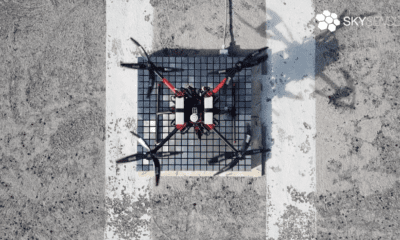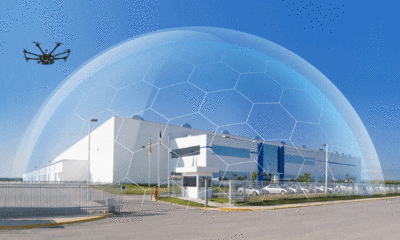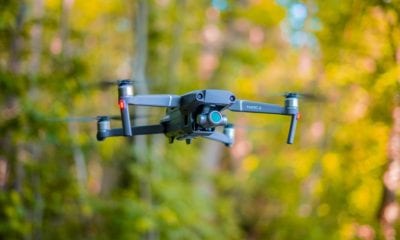News
New Hybrid Deep-Sea Drone Dives 6.8 Miles Deep
Experimental projects are being undertaken by scientific organisations to test the feasibility of drones to explore environs like space and deep hadal zones of the oceans. Now NASA’s propulsion lab and Woods Hole Oceanographic Institution (WHOI) have teamed up to create an autonomous vehicle that could be a prototype for a fleet of deep sea explorers.
Scientists from NASA’s Jet Propulsion Laboratory and the Woods Hole collaborated to build Orpheus, a small, autonomous robot capable of exploring the deepest, uncharted realms in the ocean — and possibly one day exploring extraterrestrial ocean worlds in our solar system, like the moons Europa and Enceladus.
https://www.youtube.com/watch?v=lwp3pCoyYMUWith the aim of testing a platform with new technology and new designs of autonomous probes the Orpheus Hadal underwater robot was deployed off the waters of Cape Cod in September 2018. When the Orpheus drone reemerged, deep sea biologist Tim Shank felt relieved. Four and a half years earlier, Shank, a scientist at the WHOI, had sent a state-of-the-art exploration craft to crushing ocean depths — but the vehicle never returned.
In Greek mythology, #Orpheus was the only person to go to the underworld and return. Now, it’s the prototype for a new generation of deep-sea explorer, that will comb the deepest trenches of our oceans for life. Project between @WHOI and @NASAJPL. Thanks to @bloombergdotorg. pic.twitter.com/QJ3yNtJaUH
— OceanX (@oceanx) February 25, 2019
This time, the new exploration robot Orpheus passed its first test: The machine dove alone into the darkened sea for an hour without any human control. Importantly, the drone came back.
Members of the team comprising Molly Curran Mechanical Engineer at WHOI, John Leitchy Robotics Engineer NASA Jet propulsion lab, explained that there are 4 cameras in the vehicle travelling across the hadal zone, taking pictures that are stitched together. The idea is to have a fleet of hadal drones working together. This mission has been a success in providing 3D images of the deep sea floor to the scientific world the crew members said. In these deep and unknown realms, such a craft must be able to explore, map, and photograph these worlds on its own, without a human at the controls as also without a tether linking the robot to humans above.
“This is an area over half the size of Australia that we haven’t explored yet,” Shank says. For the next four years, OceanX and the charity Bloomberg Philanthropies have committed $185 million to facilitate ocean exploration and conservation around the world, including Orpheus’ research missions.”
Orpheus’ engineers kept the craft small to help trim costs keeping it five feet long and around 550 pounds in weight; unlike other conventional robotic exploration craft, commonly known as ROVs which are around the size of a Volkswagen station wagon. Building a smaller ocean exploration vehicle is cheaper, easier, and doesn’t require a massive ship, explained Leichty.
Orpheus’ training to become mostly autonomous has commenced, and in the next couple of years the machine will employ image-recognition technology — similar to that of autonomous cars. Orpheus has yet to enter the hadal zone, but the robot’s small, nimble frame is designed for enduring pressure. Orpheus is designed to land on the deepest ocean floor, 36,000 feet down, to sift through the alien ground, gather samples, and carry them back up to the surface.























